当前位置:网站首页>Two way process republication + routing policy
Two way process republication + routing policy
2022-07-04 10:20:00 【Attiude】
Two way process republishing + Routing strategy
Related knowledge :
Multipoint two-way republishing : Between two routing protocols or two processes of the same protocol , Use multiple stations ASBR To republish , Realize link backup , Improve network stability and efficiency ;
There may be problems :
In multipoint bidirectional republishing , The first ASBR After the republish is complete , May be republished to B Routing entry for the protocol , Will affect other ABSR, Refresh their routing tables ; Result in routing entries from A The agreement is published to B After the agreement , And back to A agreement :
1、 Routing feedback
2、 Leading to serious poor routing
Solution :
stay cisco In the system eigrp agreement , The default multi-point publishing protocol is the same as other two-way publishing protocols , There will be no routing feedback — cisco In the system rip priority 120 ospf 110 eigrp 90 But the re release goes into eigrp The priority of partial routing is 170;
Because of the different priorities , Make the first ASBR After republishing , It won't affect the other one ASBR The routing table for , Therefore, there is no routing feedback ;
In the Huawei system , Because there is no eigrp, So Huawei is ospf Agreement , The double priority approach is also used ;
ospf The routing priority normally generated is 10, Redistribute incoming 5/7 class LSA, The generated route is 150;
notes : stay ospf Agreement , Loopback works by default based on 32 Bit host routing for delivery ; Therefore, in multi-point two-way republishing ,ASBR It belongs to ospf When the loopback interface of the protocol is republished ,ospf Press 32 Bit transfer , Other protocols will share according to the actual mask of the interface ; If the masks are inconsistent , Will lead to routing problems , Configure loopback interface as 32 Bit host routing , Or modify the loopback interface in ospf The working methods in the agreement can be
Routing strategy :
Noun :
** Control level :** Dynamic routing protocol is the flow of routing protocol information , The direction is the flow direction of the control layer
Data level : The router uses the generated routing table , Forwarded user data traffic ; The direction is opposite to the control level
Routing strategy : When the traffic at the control level enters or leaves the router interface , Grab traffic ; Modify or discard the content , Finally, it affects the generation of routing table , Interfere with the routing of the router ;
【1】 Grab traffic
1)ACL Access control list
ACL It is designed to deal with data level traffic restrictions ; It can also be used to capture the flow at the control level ;
But because of ACL The design is based on data level traffic , Therefore, we do not pay attention to the subnet mask in the packet ; So that when grasping the flow of the control layer , May not match exactly ;
2) The prefix list – It is specially used to capture the flow at the control level , Exact match subnet mask
【2】 Routing strategy — Modify the parameters in the flow control layer
The strategy is a hop by hop behavior , Effects can be superimposed ; Multiple interfaces through which the traffic passes in the whole path are configured with metrics , Finally, add a measure to the total ;
3、 Call... When republishing
[r2]ospf 1
[r2-ospf-1]import-route rip 1 route-policy Huawei
Configuration Guide :
1、 Even if you want to reject a traffic , Permission must also be used when grasping , Then reject in the routing policy ;
2、 Match one by one from top to bottom , If the previous item matches, follow the previous item , Don't view the next , The end implicitly rejects all
3、 In one rule , If there is no flow matching, it is to match all ; If there is no application, only the current big action is performed on the matching traffic ;
Therefore, an empty table with large actions allowed represents that all ;
4、 or And Relationship
Or relationship for each site ( Each serial number ) Between or in relation to ;
Serial number 10 No matching traffic , Then the serial number 20;
Summarize or relate to :
The entry is based on the site number ( Serial number ) Match one by one from top to bottom , If the previous item matches, follow the previous item , Don't view the next — Or relationship
In each serial number , Match all traffic at the same time , Perform all small actions at the same time — And relationships
The experimental requirements :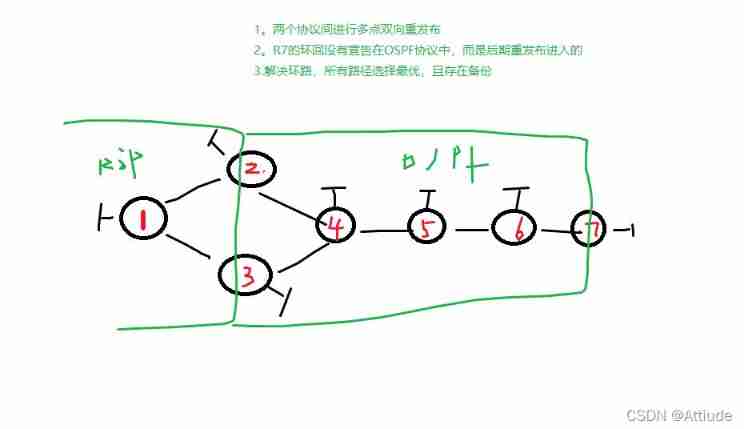
Topology :
1、 To configure IP Address :
[r1]int g0/0/0
[r1-GigabitEthernet0/0/0]ip add 12.1.1.1 24
[r1-GigabitEthernet0/0/0]int g0/0/1
[r1-GigabitEthernet0/0/1]ip add 13.1.1.1 24
[r1]int l0
[r1-LoopBack0]ip add 1.1.1.1 24
[r2]int g0/0/0
[r2-GigabitEthernet0/0/0]ip add 12.1.1.2 24
[r2-GigabitEthernet0/0/0]int g0/0/1
[r2-GigabitEthernet0/0/1]ip add 24.1.1.1 24
[r2]int l0
[r2-LoopBack0]ip add 2.2.2.2 24
The same goes for other routers , The following only shows the interface information of the router :
R3:
GigabitEthernet0/0/0 13.1.1.2/24
GigabitEthernet0/0/1 34.1.1.1/24
LoopBack0 3.3.3.3/24
R4:
GigabitEthernet0/0/0 24.1.1.2/24
GigabitEthernet0/0/1 34.1.1.2/24
GigabitEthernet0/0/2 45.1.1.1/24
LoopBack0 4.4.4.4/24
R5:
GigabitEthernet0/0/0 45.1.1.2/24
GigabitEthernet0/0/1 56.1.1.1/24
LoopBack0 5.5.5.5/24
R6:
GigabitEthernet0/0/0 56.1.1.2/24
GigabitEthernet0/0/1 67.1.1.1/24
LoopBack0 6.6.6.6/24
R7:
GigabitEthernet0/0/0 67.1.1.2/24
LoopBack0 7.7.7.7/24
2、 According to the requirements of the experiment , stay R1/R2 Loopback /R3 Running on the interface of RIP agreement
[r1]rip 1
[r1-rip-1]v 2
[r1-rip-1]net 1.0.0.0
[r1-rip-1]net 12.0.0.0
[r1-rip-1]net 13.0.0.0
[r2]rip 1
[r2-rip-1]v 2
[r2-rip-1]net 2.0.0.0
[r2-rip-1]net 12.0.0.0
rip 1
version 2
network 13.0.0.0
In addition rip Areas and r7 Outside the loop , function OSPF agreement
[r2]ospf 1 router-id 2.2.2.2
[r2-ospf-1]area 0
[r2-ospf-1-area-0.0.0.0]net 24.1.1.1 0.0.0.0
[r3]ospf 1 router-id 3.3.3.3
[r3-ospf-1]area 0.0.0.0
[r3-ospf-1-area-0.0.0.0]network 3.3.3.3 0.0.0.0
[r3-ospf-1-area-0.0.0.0]network 34.1.1.1 0.0.0.0
R4:
area 0.0.0.0
network 4.4.4.4 0.0.0.0
network 24.1.1.2 0.0.0.0
network 34.1.1.2 0.0.0.0
network 45.1.1.1 0.0.0.0
R5:
area 0.0.0.0
network 5.5.5.5 0.0.0.0
network 45.1.1.2 0.0.0.0
network 56.1.1.1 0.0.0.0
R6:
area 0.0.0.0
network 6.0.0.0 0.0.0.255
network 6.6.6.6 0.0.0.0
network 56.1.1.2 0.0.0.0
network 67.1.1.1 0.0.0.0
R7:
area 0.0.0.0
network 67.1.1.2 0.0.0.0
3、 At every ASBR Yes rip、ospf、r7 Loopback for two-way republication :
R3:
[r3-rip-1]import-route ospf
[r3-ospf-1]import-route rip
R2:
[r2-rip-1]import-route ospf
[r2-ospf-1]import-route rip
R7:
[r7-ospf-1]import-route direct
After republishing , We see the R2 The routing table for :
We found that , Go to R3 There are two routes for loopback , from ospf The learned mask 32 position , from rip What I learned 24 position , Because the masks of routes are different , Are added to the routing table , We only need one , There are two ways :
1、 modify R3 Looped IP
2、 modify R3G0/0/1 Work type of interface
Modify the interface type :
[r3-GigabitEthernet0/0/1]ospf network-type broadcast
It takes effect after restarting the interface , Let's check the routing table :
We found that , Only go to... Is left in the routing table R3 A route of
Next , We use it R1pingR7 The loopback of , Find no way :
Observe by grabbing bags , Find a lot ICMP package , And check the routing table and find R1—>R2—>
R34—>R3, A loop has occurred .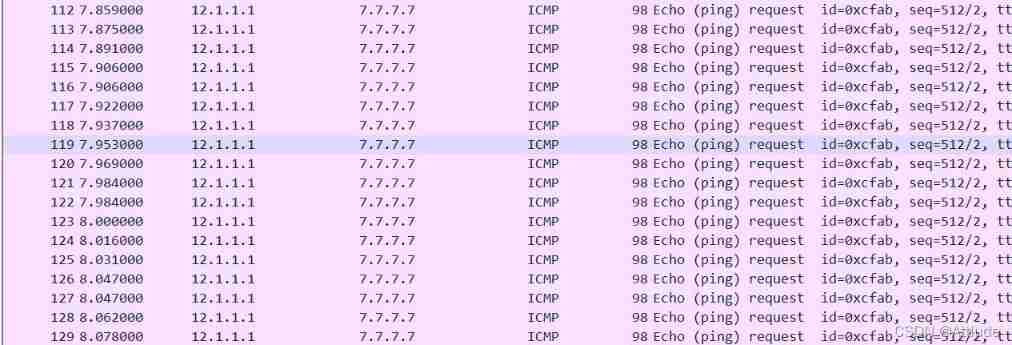
R1:
R2:
R4:
R3:
We found that , The root cause of contact ring is 7.7.7.7 adopt R2 Republish to rip The priority in the area changes to 100, But after R3 After the re release of , The priority becomes 150, therefore R4 Find out from R3 and R5 You can go to R7, also R3 More direct , So I chose R3.
Next , To solve this problem without affecting redundant backups , We can carry out routing strategy , Will be taken from R2 or R3 In the R7 The priority of loopback of is changed to be higher than 150 Big , therefore R4 Will choose R5 To arrive R7 The loopback of .
Next, configure :
[r1]route-policy a permit node 10
[r1-route-policy]apply preference 151
[r1-rip-1]preference route-policy a
Achieve a goal , Try to use R1ping7.7.7.7
边栏推荐
- Reprint: summation formula of proportional series and its derivation process
- Ruby时间格式转换strftime毫秒匹配格式
- What is devsecops? Definitions, processes, frameworks and best practices for 2022
- Debug:==42==ERROR: AddressSanitizer: heap-buffer-overflow on address
- Number of relationship models
- Rhsca day 11 operation
- Exercise 9-5 address book sorting (20 points)
- Exercise 7-3 store the numbers in the array in reverse order (20 points)
- Hands on deep learning (38) -- realize RNN from scratch
- Hands on deep learning (36) -- language model and data set
猜你喜欢

Development guidance document of CMDB
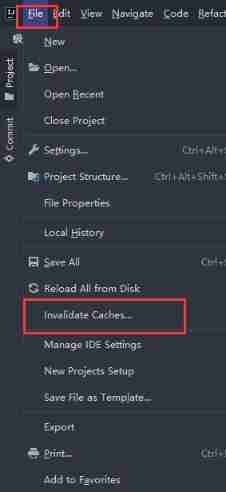
Occasional pit compiled by idea
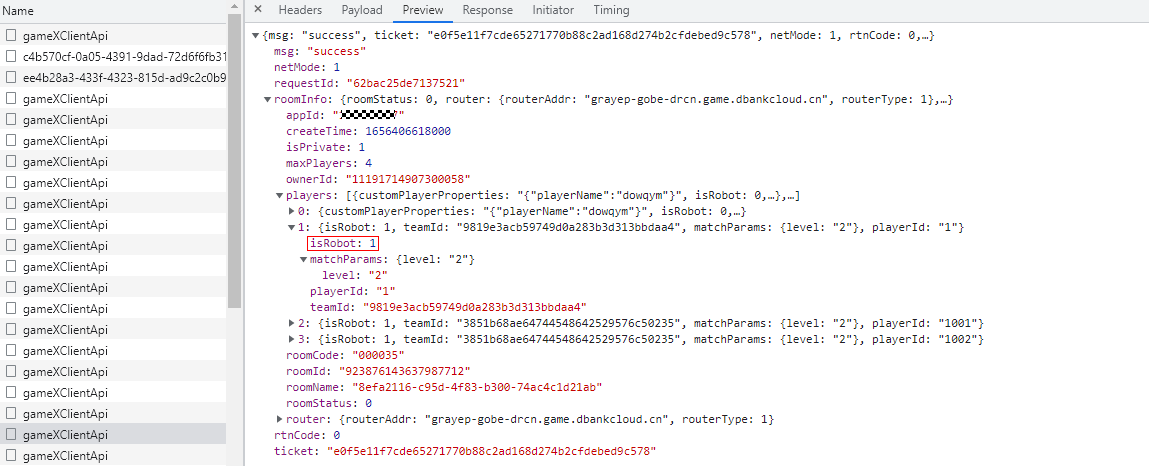
How can Huawei online match improve the success rate of player matching
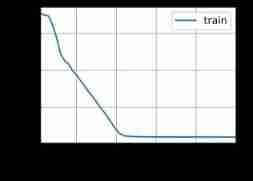
Hands on deep learning (41) -- Deep recurrent neural network (deep RNN)
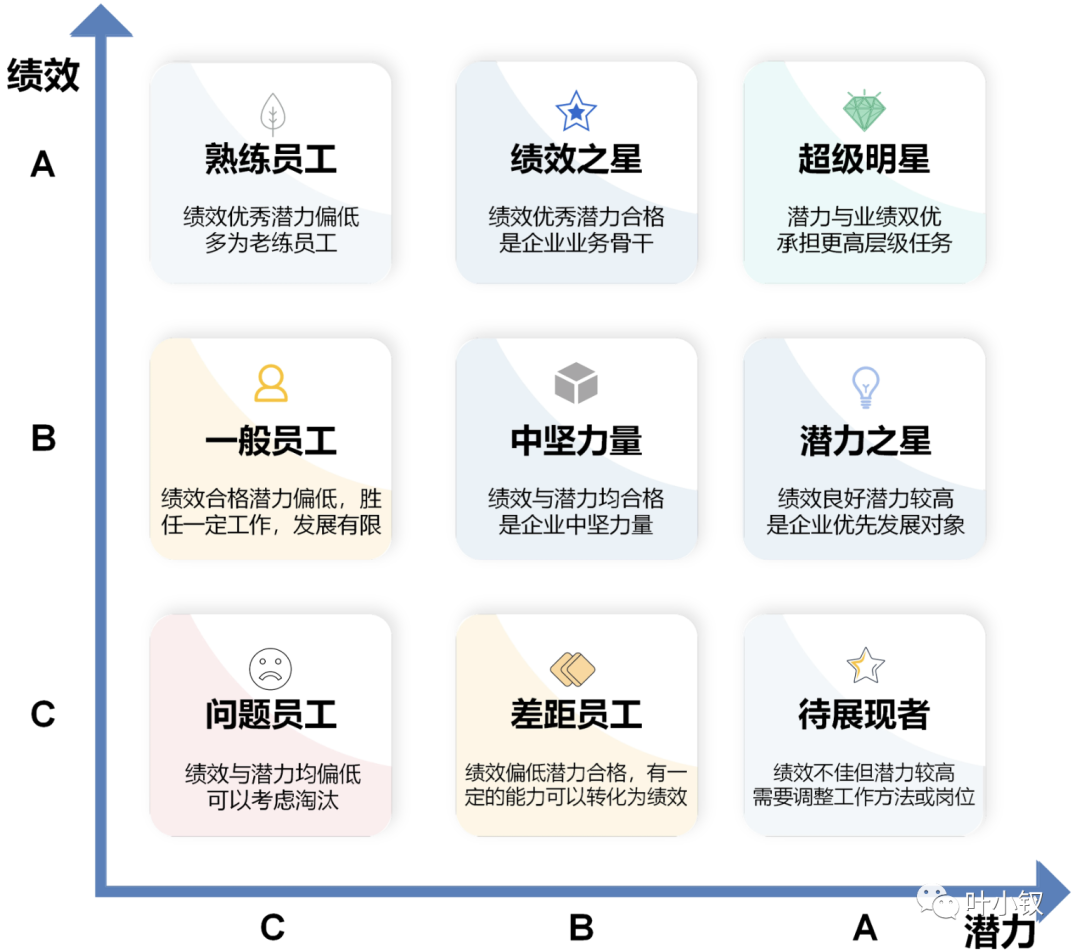
Advanced technology management - how to design and follow up the performance of students at different levels

Basic principle of servlet and application of common API methods

Tables in the thesis of latex learning

品牌连锁店5G/4G无线组网方案
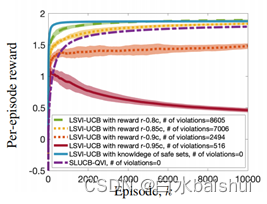
Safety reinforcement learning based on linear function approximation safe RL with linear function approximation translation 2
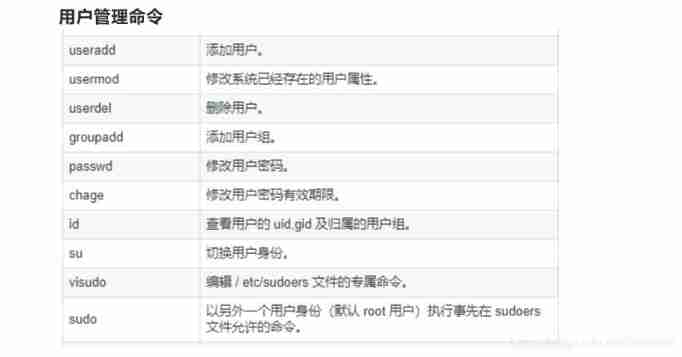
Devop basic command
随机推荐
Application of safety monitoring in zhizhilu Denggan reservoir area
SQL replying to comments
2021-08-11 function pointer
JDBC and MySQL database
Summary of reasons for web side automation test failure
Kotlin 集合操作汇总
[FAQ] summary of common causes and solutions of Huawei account service error 907135701
If the uniapp is less than 1000, it will be displayed according to the original number. If the number exceeds 1000, it will be converted into 10w+ 1.3k+ display
Pcl:: fromrosmsg alarm failed to find match for field 'intensity'
Online troubleshooting
Custom type: structure, enumeration, union
Differences among opencv versions
Map container
Development guidance document of CMDB
Basic principle of servlet and application of common API methods
Hands on deep learning (34) -- sequence model
Regular expression (I)
Machine learning -- neural network (IV): BP neural network
Exercise 9-3 plane vector addition (15 points)
Servlet基本原理与常见API方法的应用